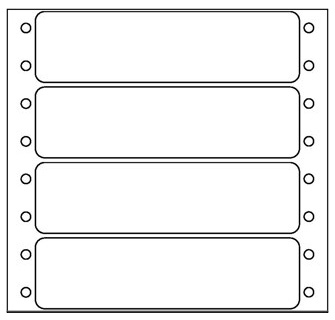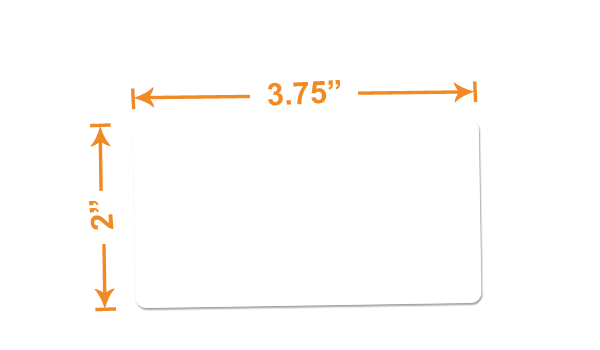Make unique prints using Blank Labels.
Make unique prints using Blank Labels.
Blog Article
Understanding Just How Blank Labels Work to Boost Your Labeling Experience
Comprehending the technicians of blank labels is essential for optimizing your labeling practices across different contexts. To completely realize just how these labels can change your procedures, one must consider the different types available and the myriad means they can be tailored to suit specific demands.

Advantages of Making Use Of Blank Labels
Blank labels offer a functional solution for numerous identifying requirements, making them invaluable in both individual and specialist settings. Their flexibility allows customers to develop personalized labels tailored to certain requirements, improving business effectiveness. Whether made use of in office, retail settings, or industrial applications, blank labels assist in the recognition and categorization of items, files, and individual things.
One considerable advantage of blank labels is their cost-effectiveness. By permitting users to print only the labels they require, waste is decreased, and inventory management ends up being a lot more convenient. In addition, blank labels are compatible with various printing techniques, including inkjet and laser printers, making them easily accessible for various customers.

In addition, using blank labels streamlines the procedure of updating details, as users can quickly publish new labels to change obsolete ones, guaranteeing that all items and documents are precisely classified. Overall, blank labels supply a practical and efficient labeling option for varied applications.
Types of Blank Labels Available
What choices are readily available when it comes to blank labels? Blank labels be available in a selection of types, each suited for different applications and choices. One of the most common types include paper labels, which are flexible and cost-efficient, making them perfect for daily usage. They are readily available in various finishes, such as matte and glossy, enabling visual adaptability.
One more preferred alternative is artificial labels, often made from materials like polyester or vinyl. These labels are known for their sturdiness and resistance to water, chemicals, and tearing, making them appropriate for extreme settings. They are generally made use of in commercial setups or for labeling items that might be subjected to wetness.
Furthermore, there are thermal transfer labels, which need a printer that utilizes warm to transfer ink onto the label surface. These labels are preferred for their high-quality print and long life.
Last but not least, specialized labels satisfy certain requirements, such as removable labels for short-term use or high-temperature labels for severe problems. Comprehending these choices allows users to pick the most appropriate blank label for their unique labeling requirements.
Personalization Options for Labels
A vast variety of personalization choices is offered for labels, allowing users to customize them to details requirements and branding requirements. Users can pick from different sizes, forms, and materials to ensure that the labels properly fit their designated purpose. Usual products include paper, polyester, and plastic, each providing various degrees of resilience and visual charm.
Color alternatives play a vital role in modification, enabling brand names to preserve uniformity with their corporate identification. Individuals can select from a spectrum of shades or perhaps choose customized printing to match specific branding aspects. Additionally, labels can be printed with one-of-a-kind styles, logo designs, and text, improving brand name recognition and aesthetic impact.
One more important element is the selection of adhesive. Labels can be made with long-term, detachable, or repositionable adhesives, depending on the application demands. This adaptability enables efficient labeling remedies across different settings, from retail to industrial settings.

Tips for Effective Labeling
Reliable labeling goes past customization; it additionally includes strategic factors to consider that enhance capability and communication. To attain efficient labeling, start by clearly specifying the function of each tag.
Next, focus on exposure by picking suitable shades and font styles. High comparison between message and background improves readability, while bigger font styles promote quick recognition. Additionally, make certain that labels are positioned in a constant and logical way, making it less complicated for individuals to situate and interpret info.
Consider the longevity of labels. Choose materials matched for the specific atmosphere where the labels will be used, whether it be inside your home or outdoors. Water-proof or tear-resistant options may be needed relying on the context.
Lastly, on a regular basis YOURURL.com testimonial and update your labels to show any type of adjustments in details or usage. This click here for more proactive technique not just keeps quality but also prevents complication with time. By adhering to these tips, you can take full advantage of the performance of your labeling initiatives, guaranteeing they offer their desired objective successfully.
Applications of Blank Labels
Blank labels offer various applications across different industries, making them an indispensable tool for company and interaction. These functional labels are generally made use of in stockrooms for supply administration, enabling organizations to conveniently recognize and track items. By using blank labels to storage bins, shelves, or pallets, firms can simplify their procedures and minimize the probability of errors.
In the healthcare sector, blank labels play a crucial role in classifying drugs and clinical supplies, ensuring correct recognition and usage. Customizable labels can consist of crucial info such as dosage, expiry days, and client details, boosting security and conformity.
In retail, blank labels aid in prices products, giving promotions, or labeling rack places, which ultimately improves the customer experience. They enable fast updates to pricing or item information without the demand for pre-printed labels.
Moreover, blank labels are advantageous for individual use, such as arranging home offices, crafting, or labeling food containers. Their versatility allows people to create customized solutions that satisfy specific demands. In general, the applications of blank labels are considerable, highlighting their relevance in promoting performance and clearness in numerous settings.
Final Thought
In final thought, blank labels offer a functional and efficient option for numerous classifying demands. Ultimately, the integration of blank labels into operational processes contributes look at this site to enhanced effectiveness, making them a very useful source for both individual and specialist usage.
Report this page